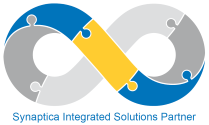Last week I attended the Haystack relevance conference – I’ve already written about my overall impressions but the following are some more notes on the conference sessions. Note that some of the presentations I attended have already been covered in detail by Sujit Pal’s excellent blog. Those presentations I haven’t linked to directly should appear soon on the conference website.
Doug Turnbull of Open Source Connections gave the keynote presentation which led on the idea that we need more open source tools and methods for tuning relevance, including those to gather search analytics. He noted how the Learning to Rank plugins recently developed for both Solr and Elasticsearch have provided commoditized capabilities previously only described by academia and how we also need to build a cohesive community around search relevance. As it turned out, this conference did in my view signal the birth of that community.
Next up was Peter Fries who talked about a business-friendly approach to search quality, a subject close to my heart as I regularly have to discuss relevance tuning with non-technical staff. Peter described how search quality is often presented to business teams as mysterious and ‘not for them’ – without convincing these people of the value of search tuning we will fail to take account of business-related factors (and we’re also unlikely to get full buy-in for a relevance tuning project). He went on to say how it is important to include the marketing and management mindsets in this process and a method for search tuning involving feedback loops and an ‘iron triangle’ of measurement, data and optimisation. This was a very useful talk.
I then went to hear Chao Han of Lucidworks demonstrate how their product Fusion App Studio allows one to capture various signals and use these for ‘head and tail analysis’ – looking not just at the ‘head’ of popular, often-clicked results but those in the ‘tail’ that attract few clicks, possibly due to problems such as mis-spellings. Interestingly this approach allows automatic tail query rewriting – an example might be spotting a colour word such as ‘red’ in the query and rewriting this into a field query of colour:red. This was a popular talk although the presenter was a little mysterious about the exact methodology used, perhaps unsurprisingly as Fusion is a commercial product.
After a tasty Mexican-themed lunch I took a short break for some meetings, so missed the next set of talks. I then went to Elizabeth Haubert’s talk on Click Analytics. She began with a description of the venerable TREC conference (now in its 27th year!) which has evaluated relevance judgements and how these methods might be applied to real-world situations. For example, the TREC evaluations have shown that how relevance tests are assessed is as important as the tests themselves – the assessors are effectively also users of the system under test. She recommended calbrating both the rankings to a tester and the tester to the rankings, and to create a story around each test to put it in context and to help with disambiguation.
We finished the day with some lightning talks, sadly I didn’t take notes on these but check out Sujit’s aforementioned blog for more information. I do remember Tom Burgmans’ visualisation tool for Solr’s Explain debug feature which I’m very much looking forward to seeing as open source. The evening continued with a conference dinner nearby and some excellent local craft beer.
I’ll be covering the second day next.














